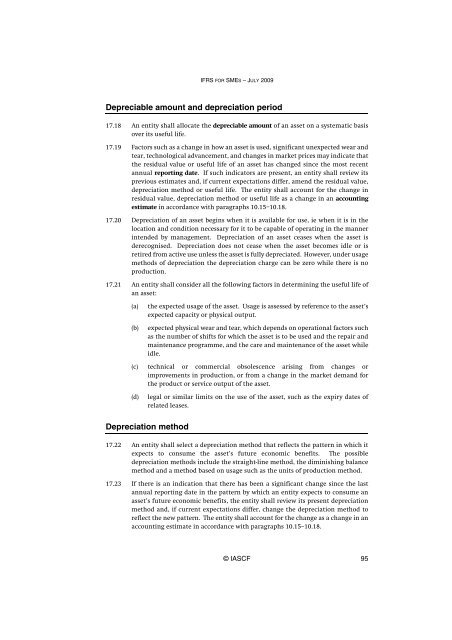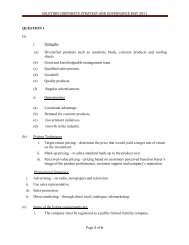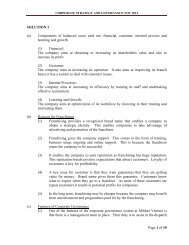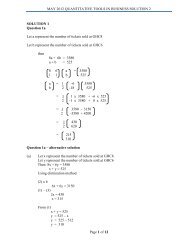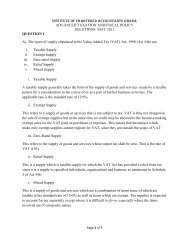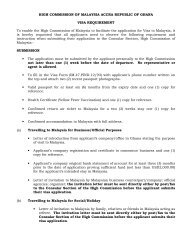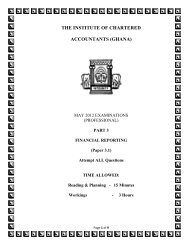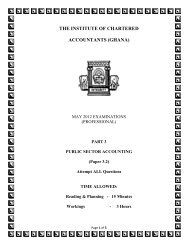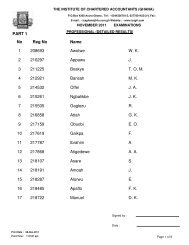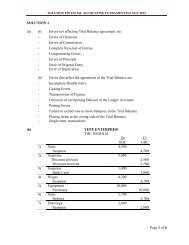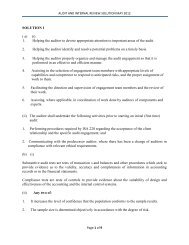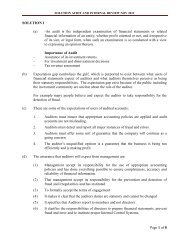(IFRS) for Small and Medium-sized Entities (SMEs)
(IFRS) for Small and Medium-sized Entities (SMEs)
(IFRS) for Small and Medium-sized Entities (SMEs)
You also want an ePaper? Increase the reach of your titles
YUMPU automatically turns print PDFs into web optimized ePapers that Google loves.
<strong>IFRS</strong> FOR SMES – JULY 2009Depreciable amount <strong>and</strong> depreciation period17.18 An entity shall allocate the depreciable amount of an asset on a systematic basisover its useful life.17.19 Factors such as a change in how an asset is used, significant unexpected wear <strong>and</strong>tear, technological advancement, <strong>and</strong> changes in market prices may indicate thatthe residual value or useful life of an asset has changed since the most recentannual reporting date. If such indicators are present, an entity shall review itsprevious estimates <strong>and</strong>, if current expectations differ, amend the residual value,depreciation method or useful life. The entity shall account <strong>for</strong> the change inresidual value, depreciation method or useful life as a change in an accountingestimate in accordance with paragraphs 10.15–10.18.17.20 Depreciation of an asset begins when it is available <strong>for</strong> use, ie when it is in thelocation <strong>and</strong> condition necessary <strong>for</strong> it to be capable of operating in the mannerintended by management. Depreciation of an asset ceases when the asset isderecognised. Depreciation does not cease when the asset becomes idle or isretired from active use unless the asset is fully depreciated. However, under usagemethods of depreciation the depreciation charge can be zero while there is noproduction.17.21 An entity shall consider all the following factors in determining the useful life ofan asset:(a)(b)the expected usage of the asset. Usage is assessed by reference to the asset’sexpected capacity or physical output.expected physical wear <strong>and</strong> tear, which depends on operational factors suchas the number of shifts <strong>for</strong> which the asset is to be used <strong>and</strong> the repair <strong>and</strong>maintenance programme, <strong>and</strong> the care <strong>and</strong> maintenance of the asset whileidle.(c) technical or commercial obsolescence arising from changes orimprovements in production, or from a change in the market dem<strong>and</strong> <strong>for</strong>the product or service output of the asset.(d)legal or similar limits on the use of the asset, such as the expiry dates ofrelated leases.Depreciation method17.22 An entity shall select a depreciation method that reflects the pattern in which itexpects to consume the asset’s future economic benefits. The possibledepreciation methods include the straight-line method, the diminishing balancemethod <strong>and</strong> a method based on usage such as the units of production method.17.23 If there is an indication that there has been a significant change since the lastannual reporting date in the pattern by which an entity expects to consume anasset’s future economic benefits, the entity shall review its present depreciationmethod <strong>and</strong>, if current expectations differ, change the depreciation method toreflect the new pattern. The entity shall account <strong>for</strong> the change as a change in anaccounting estimate in accordance with paragraphs 10.15–10.18.© IASCF 95


